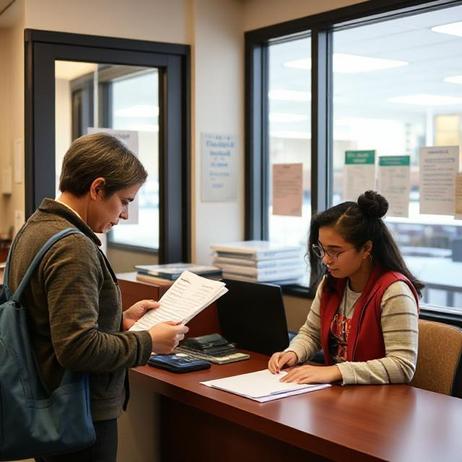Understanding Public School Lotteries, Magnet Programs and Dual-Language Schools
When families explore public-school options beyond their neighborhood zone, three major pathways often appear: lotteries, magnet programs and dual-language schools. Although each mechanism has its own logic, they share a common aim: offering additional choice, access and educational enrichment within the public-school system. This article—current for 2025—explains how each works, what parents and students should know, and how to navigate the process effectively.
1. What is a public school lottery?
Why a lottery?
When demand for a certain program or school exceeds available seats, many school districts resort to a lottery system to allocate spots fairly and transparently. As one guide explains: “A school lottery is a process that districts use when more students apply for a program than there are available seats.”
The lottery serves multiple functions:
It facilitates school-choice options within the public system (rather than strictly attending one’s zoned school).
It helps districts manage capacity, maintain demographic balance and meet equity goals.
It ensures the allocation process is not purely first-come, first-served (which may disadvantage families with fewer resources).
How does the lottery process work?
While specifics differ by district, most lotteries follow a similar outline:
Families submit an application listing one or several preferred schools/programs.
If applications exceed seats, a randomised selection (using computer-generated or manual methods) sorts applicants.
The system may incorporate priority tiers such as: siblings currently enrolled at the school, in-district residence, specific programs or socio-economic criteria.
Applicants who are not selected may be placed on wait-lists.
Once selected, families generally must accept the offer and complete registration by a set deadline.
What should parents be aware of?
Applying does not guarantee placement. The lottery is contingent on seat availability and preferences.
Deadlines, documentation (proof of residence, immunisations, etc.) and following instructions are crucial.
If your child is already enrolled in a zoned school, you may still apply to non-zoned programs but you’ll likely remain eligible for your zone school regardless.
Understand any priority rules (such as sibling preference) so you can evaluate your odds and plan contingencies.
If you are placed on a wait-list, monitor your status and know the cut-offs or deadlines to accept a later offer.
Example: 2025 trends
For example, in one large urban district, over 16,000 students applied to non-zoned school choice programs in 2025, though that number was down from the prior year. The applications covered up to 10 school or program choices per student.
Summary Table: Lottery vs. Traditional Zoned Assignment
| Feature | Zone School Assignment | Lottery / Choice Program |
|---|---|---|
| Default school | Typically guaranteed based on address | No guarantee; must apply |
| Selection method | Automatic based on residence | Randomised selection if oversubscribed |
| Priority rules | In-zone, feeder pattern | May include siblings, proximity, special programs |
| Timeliness | Usually rolling at registration | Fixed application window and deadlines |
| Flexibility | Limited to zone | Greater choice of schools/programs outside zone |
2. Understanding Magnet Programs
What is a magnet program?
Magnet schools or magnet programs are public-school offerings with a specialised theme, curriculum focus or instructional model: for example STEM (science, technology, engineering, mathematics), arts integration, International Baccalaureate and dual-language immersion. Typically open to students district-wide (or region-wide), magnet programs aim to attract a diverse student body and concentrate resources and expertise in that particular focus.
How they interplay with lotteries
Since many magnet programs receive more applications than available seats, the lottery model often governs admission:
Some magnet seats may be “criteria-based”, meaning students must meet specific eligibility (e.g., test scores, auditions).
Others are “lottery-based” where any applicant qualifies but selection is random among applicants.
Priority tiers such as siblings, students from underrepresented backgrounds or teacher referrals may apply.
Families apply during a defined window, listing preferred magnet programs; results and acceptance follow the lottery or criteria process.
Why magnet programs matter
Offer enriched or specialised curriculum not available in traditional zone schools.
Provide choice and pathways tailored to student interests and strengths (e.g., language immersion, advanced STEM).
Promote diversity and innovation in public education by drawing students from across zones.
For parents and students seeking a “theme-based” environment, magnet programs open new possibilities beyond the local campus.
Tips for parents
Research key deadlines and application windows—the earlier you prepare the application, the less stress.
Visit the magnet school/program: attend open houses, ask about student outcomes, culture and transportation.
Evaluate transportation/bus availability if you apply out of your zone.
Check eligibility criteria (if criteria-based) and ensure your child meets them.
Rank your choices thoughtfully: some districts allow multiple preferences, increasing odds of acceptance.
Have a back-up plan: if your top magnet choice doesn’t accept your child, make sure your zoned school or another option is acceptable.
3. Dual-Language Schools and Immersion Programs
What is a dual-language or language-immersion school?
In dual-language programs, students receive instruction in two languages (for instance, English and Spanish) with the goal of bilingualism, biliteracy and cross-cultural competence. The model may be one-way (students share a non-English home language) or two-way (English-speakers and non-English-speakers learning together) depending on the district.
These programs are frequently offered as a magnet or choice option within districts. For example, one district’s dual-language immersion (DLI) program begins in Kindergarten with a 90 % target-language instruction gradually shifting toward 50/50 over time.
Why consider dual-language schools?
Research shows students in high-quality dual-language programs often perform as well or better than peers in monolingual programs across academic and language domains.
Biliteracy and bilingualism are strong long-term assets: college admissibility, career flexibility, global competence.
Cultural competence and cognitive advantages (e.g., improved executive functioning) are cited benefits of dual-language education.
For English-speakers, exposure to a second language from an early age can foster language acquisition, deeper cognition, and empathy.
How admissions often work
Many dual-language programs are application-based, part of a magnet/choice system, and use lotteries when over-subscribed.
Entry typically begins in Kindergarten (and sometimes grade 1) depending on the district.
Some programs require applicants to reside within certain attendance zones, or may give siblings priority.
Because language instruction builds over many years, students are often expected to commit to the program through elementary grades, or even into middle and high school.
Tips for parents
Understand the model: 90/10 vs. 50/50 split, which language is partner language, whether it’s one-way or two-way immersion.
Confirm transportation: out-of-zone placement may require bus or parent drop-off.
Know the long-term commitment: switching mid-program may affect progress or placement.
Visit the school, observe multilingual classrooms, ask about teacher qualifications, language proficiency goals and progression.
Consider your child’s interest and readiness for language-rich instruction; while supports exist, immersion can require sustained effort.
4. Bringing it all together: Planning, strategy and what to prioritise
Getting organised: timeline and checklist
Late winter / early spring: many districts open applications for lotteries, magnet programs or dual-language schools. Ensure you know deadlines.
Research period: attend school tours, district information sessions, review program focus, curriculum, outcomes and transportation.
Application submission: complete required forms, select preferences, deliver documentation (proof of residence, siblings, etc.).
Notification: most districts release lottery/match results in late spring. Accept your seat and complete registration timely.
Wait-list follow-up: if not accepted initially, monitor wait-list status and adhere to deadlines for accepting offers.
Backup plan: identify and apply to zoned school or alternative program in case first choices are not available.
Key decision-factors for families
Fit: Does the magnet or dual-language program align with your child’s interests, learning style and aspirations?
Logistics: Consider commute time, transportation, drop-off/pick-up, and how that will affect family routine.
Commitment: Dual-language programs often require long-term participation; magnet programs may also entail extra expectations (projects, travel, performances).
Equity & cost: While tuition-free, out-of-zone options may incur additional time or transportation burdens.
School climate & outcomes: Ask about student achievement, language proficiency (for dual-language), student engagement, teacher turnover and culture.
Fallback option: A strong zoned school may be a good default if choice programs don’t work out—don’t assume a lottery guarantee.
Common pitfalls to avoid
Missing the application deadline or submitting incomplete documentation.
Ranking only one school without applying for additional preference options (if allowed).
Neglecting to follow up if on a wait-list; seats may open later and deadlines can be tight.
Failing to attend the school visit or gather adequate information. A good fit matters.
Assuming that all lottery-based schools are “better” than zoned schools; some may simply be more popular or limited in seats. The lottery model is not a quality guarantee.
5. Final word for 2025 and beyond
As public-school systems continue to expand choice, magnet and dual-language programs, the role of lotteries and application-based admission is growing. For the 2025 school year and beyond, families must be proactive: understand key dates, research program details, anticipate competition for seats and ensure that logistics match home life.
At the same time, it remains important to evaluate each option on its own merits. Whether through a zoned school, a magnet program or a dual-language immersion track, the best choice for a family hinges on the child’s academic needs, interests and family priorities.
In short: apply early, visit programs, rank wisely, plan for back-up, and ensure logistics align with your child’s learning and your family’s routine. With clarity and preparation, you can leverage public-school lotteries, magnet programs and dual-language schools as a meaningful route to enriched learning opportunities.















